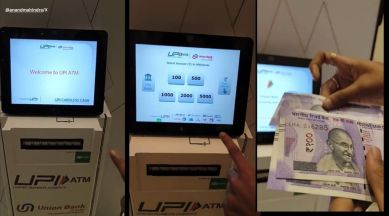‘Simply Dazzling’: Anand Mahindra in awe of UPI-supported ATM
As per Mahindra, the UPI ATM was unveiled at the Global Fintech Fest 2023 in Mumbai on September 5.

In India, the Unified Payments Interface (UPI) is a widely popular mode of payment. The National Payments Corporation of India reported that UPI transactions crossed the 10 billion mark in August.
On Thursday, business magnate Anand Mahindra shared a video that showed how a UPI-supported ATM works. The user can simply scan a QR code and that will prompt the machine to give out cash.
Commenting on Mahindra’s tweet, an Instagram user wrote, “Definitely impact on credit card companies will be there too. Already UPI has impacted and many payments where we would used a credit card for convenience we now use Gpay or PhonePe or some other app.”
Another person wrote, “Brilliant ♥️ albeit Even before pandemic,in US,contactless credit cards payment method took root as its faster than dipping a credit card chip and more secure than swiping a credit card stripe. It might be “contactless” aspect that ultimately sold world on adopting payment method”.
In India, the use of QR codes for payments is widespread. In February last year, Raju Patel, a beggar from Bihar, made news after he shed the traditional method of asking for alms and started using PhonePe, a digital wallet and an online payment app to take charity. Amused by Patel’s innovation, some people labelled him as “India’s first digital beggar”. Meanwhile, a few people pointed out how technology and digital literacy have done little to eliminate poverty.